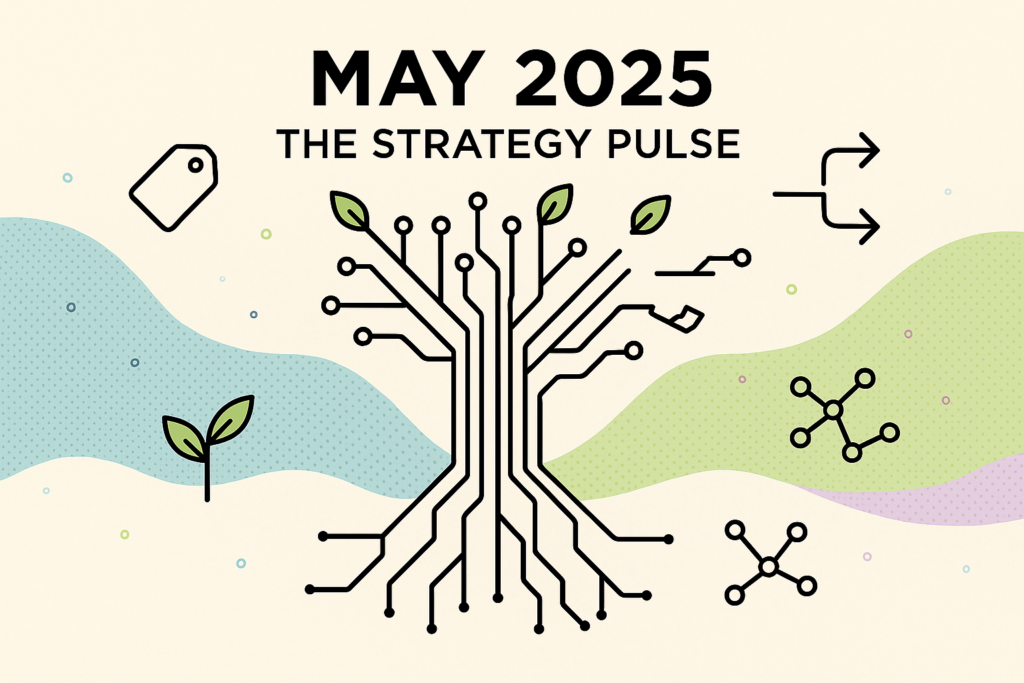Month: January 2023

What is ‘career cushioning’ and should you be doing it?
What is ‘career cushioning’ and should you be doing it?
January 17, 2023

Let’s not beat around the bush: the world is currently in a state of economic chaos. War is raging in Ukraine, businesses worldwide are still licking their wounds in the aftermath of the Covid-19 pandemic, a cost-of-living crisis has gripped the UK and countries worldwide are experiencing rising inflation with an average inflation rate of 7.4%. A dark, heavy cloud of global gloom has descended upon us, with whisperings of layoffs and redundancies haunting many office corridors worldwide.
Major corporations such as Peloton, Meta and Twitter made headlines throughout 2022 by laying off employees en masse, whilst Bloomberg reported that the pace of redundancies in the tech sector was approaching early pandemic levels. Whilst Apple didn’t follow suit by letting go of thousands of employees, the company opted to freeze hiring instead. You would be forgiven for confusing the current state of the hiring market with the Wild West circa 1890. In the words of Olivio Rodrigo, ‘it’s brutal out here’.
So, why exactly are so many companies resorting to mass redundancies? Mainly due to the looming threat of an impending recession and the consequent need to cut costs wherever possible.
In light of these developments, it’s no surprise that many of us are seeking new ways to future-proof our working life against outside forces beyond our control. The last thing any of us wants is to be made redundant, left out in the cold with every door of opportunity around us firmly closed. In the midst of such an anxiety-inducing economic situation, employees are asking the question: how do I prepare myself should the worst-case scenario become a reality?
Enter ‘career cushioning’, the latest in a string of career trends that appears to be making serious waves on social media and beyond (the hashtag on TikTok has 75,000 views thus far). As is the case with many career trends, the term ‘career cushioning’ is derived from dating slang. In the dating world, ‘cushioning’ involves actively pursuing new romantic connections whilst still in a committed relationship, gearing up for an impending breakup.
When it comes to your professional life, however, the process of ‘cushioning’ is a little more ethical. ‘Career cushioning’ is a way of protecting yourself against a potential job loss, by making yourself more employable so that you can bounce back from redundancy more quickly. Not to be confused with ‘quiet quitting’, ‘career cushioning’ is an insurance policy that involves implementing measures to safeguard your working life whilst still remaining as committed as ever to your current role. It does not by any means indicate a changing attitude to work or shifting loyalties, but rather functions as a safety net in the face of an uncertain future.
So, the question is: should you be ‘career cushioning’?
Short answer, yes. No matter how secure you may feel in your job, there’s nothing to be lost (and everything to be gained) from focussing on professional self-improvement and broadening your horizons.
There is no set formula or secret recipe when it comes to ‘career cushioning’. It’s whatever you make it, and the process looks different for everyone. For some, the best way to gain some career confidence is by brushing up on industry knowledge and regularly researching market trends to stay in the loop, whilst others may boost their employability by creating a personal brand on LinkedIn, nurturing and expanding their professional network in the process.
Upskilling is another sure-fire way to improve your chances of getting noticed by prospective employers and recruiters. Invest in your professional development by signing up for classes or courses to gain certifications that you can proudly display on your CV or LinkedIn profile, signposting with keywords.
Even though ‘career cushioning’ does not involve actively seeking new opportunities, engaging with recruiters is always a good idea. Not only can they add you to their database to keep you updated on relevant opportunities, but they can also provide you with expert advice on the job market.
An often-overlooked way of cushioning your career is by proving that you’re an asset at your current place of employment. If you’re happy and satisfied with your job, go above and beyond to demonstrate how indispensable you are to the company so that they couldn’t bear to let you go. Have an honest and open conversation with your boss to explore ways of developing your role at the company, finding out if there are any opportunities that can further your personal growth. Make your presence known, engage positively with colleagues, work proactively and put yourself out there.
However, at the end of the day, there’s no guarantee that this will protect you in the long-run. Whilst you should definitely do your all to prove your worth, even the most dedicated and talented employees fall victim to mass layoffs, which often have nothing whatsoever to do with your contribution to the company. Some things simply lay outside of our control, so it really is wise to do everything you can to prepare for the worst, taking matters into your own hands.
Whilst there’s nothing wrong with investing in your professional development and scoping out potential opportunities, it’s crucial that you draw a line in the sand and don’t get caught up in the whirlwind of an all-consuming job search. ‘Career cushioning’ is, after all, an insurance policy against redundancy, not an avoidance technique that sees you neglecting responsibilities at your current job. Look at it as an extra-curricular activity rather than a full-time project; by all means, spend your spare time upskilling, networking and updating your CV, but don’t let yourself fall down the rabbit hole of a job hunt that involves mindlessly scrolling through job boards and sending off mass job applications during working hours. Establishing boundaries is key.
And, if you do find yourself getting a little too invested in a full-blown job search, ‘career cushioning’ might not be the solution you’re looking for. It may suggest a genuine desire to work elsewhere and a lack of satisfaction with your current role. If this is the case, perhaps you should be taking more drastic measures to address this more fundamental problem with your job. That’s an issue for the here and now, not the future.

Making new year’s career resolutions…and sticking to them
Making new year’s career resolutions…and sticking to them
January 4, 2023

It’s January, and we all know what that means: the inevitable return of new year’s resolutions.
For many of us, December is a hazy month of unreality, characterised by the consumption of too much food and alcohol, with one day blurrily melting into the next as time loses all meaning. And then, out of nowhere, January hits like a ton of bricks, rudely awakening us from our festive slumber.
The month of January ushers in new beginnings, wiping the slate clean in preparation for positive life changes.
But, for some of us, the prospect of making ‘new year’s resolutions’ is daunting. It fills us with dread because deep down, we know that when December rolls around in twelve months’ time, we will have failed to stick to many (if not all) of our resolutions. By the time the month of January runs out, so too does much of our enthusiasm to achieve our goals for the remainder of the year.
But how do we keep up momentum and stick to our resolutions throughout 2023? According to a recent survey, 58% of the UK population will be setting themselves new year’s resolutions this year. Data from Statista has ascertained that around 20% of these will be work-related. Let’s explore some of the steps you can take that will help you stick to your career resolutions throughout the year.
Keep it realistic
Perhaps you’re starting out the year with the dream of finally receiving a long-awaited promotion or a glittering new job offer. Whilst there’s nothing wrong with being ambitious, it’s wise not to set these larger aspirations as your new year’s resolutions.
For one thing, these goals are too vague to measure over the course of a year in any meaningful way. How do you go about achieving them? How do you know you’re making any progress?
It’s far better to set smaller resolutions that are realistic and trackable. Perhaps there’s a project that you aspire to work on, or a professional certification you’re looking to complete. These smaller resolutions function as the building blocks that lay the foundations for your grander aspirations in the long-term.
It’s also important to keep your list of resolutions short and sweet, or else you may end up feeling swamped under the weight of expectation. Set yourself 5 realistic goals to avoid feeling overwhelmed.
Do it for yourself
Far too many of us buy into the age-old narrative that we need to be achieving a certain amount in our career according to what society has deemed ‘success’ and ‘failure’. There’s a pre-determined path laid out in front of us, and we often fall into the trap of aligning our goals and aspirations to these societal expectations. We end up setting career goals for the wrong reason: with the sole intention of impressing others and appearing outwardly successful.
If you really want to stick to your resolutions this year, you need to dig deep in order to determine what it is that you truly want yourself. Your career goals should be determined with your own happiness and satisfaction in mind. Drown out the white noise of other people’s expectations; their opinions are not a solid motivation that will help you achieve your goals. Think deeply about what you want and where you want to see yourself, irrespective of social pressures and external influences.
It’s all too easy to fall victim to ‘mimetic desire’ (aspiring to achieve what others have), emulating others rather than focussing on yourself. Make sure your resolutions centre around your genuine wants and needs, or else there’s little chance of you sticking to them.
Prioritise your mental health
Obsessing over your new year’s career resolutions poses the very real risk of causing ‘ambition anxiety’: the desperate desire to succeed professionally in a bid to impress others. It’s easy to get caught up in the thrill of winning and achieving, when in reality this could be costing your mental health big-time. Keep in mind that incorporating your career resolutions into your working life should feel like a marathon rather than a sprint: it’s a process that requires patience if you want to see long-term progress, and you can’t let yourself be overwhelmed by a desire to succeed.
Put your mental health at the forefront this year to remind yourself that there’s more to life than achieving your career goals. To avoid sinking under pressure, remind yourself that the stakes are not as high as you think: there’s more to life than succeeding at work. Don’t let your career aspirations dictate your life. Dedicate time and space to a new wellbeing practice this year, such as meditating, eating healthier foods, or simply going for a twenty-minute walk outside every day.
Get support
Sticking to your new year’s career resolutions can be daunting, but you don’t have to face it alone. In fact, leaning on others can be incredibly helpful when you’re setting out to achieve your goals throughout the year. Take advantage of the support system already around you (or else cultivate a new one); whether that means turning to friends and family, expanding your professional network, leaning on colleagues, or even enlisting the help of professional mentors.
And whilst you’re at it, seek out someone who can function as an accountability partner. Let your boss know what your career aspirations are and check in with them regularly to gauge how well you’re doing over the course of the year. Or, if the thought of giving your boss another opportunity to critique you sounds like your worst nightmare, ask a colleague to be your accountability partner instead.

